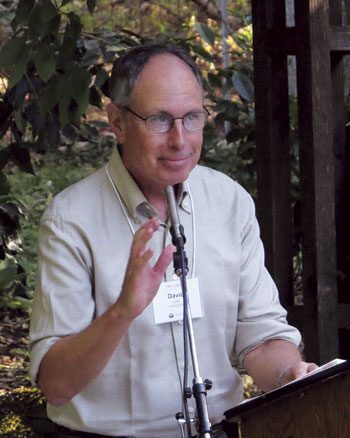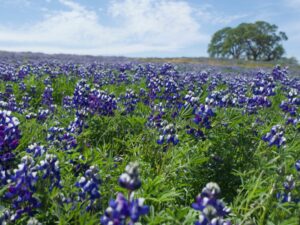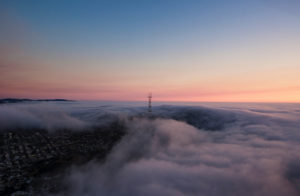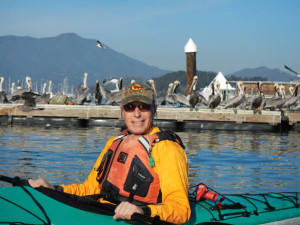s I write this letter at the end of a gorgeous Thanksgiving weekend, it appears there’s a lot to be thankful for, at least meteorologically. The weather has been gorgeous: cold, but with clear, blue skies that bring out the muted colors of the late fall landscape. Standing on a bluff at the Marin Headlands, we gazed west over the water and were able to see the craggy outline of the Farallon Islands etched clearly on the horizon. In between, the intermittent spoutings of southward migrating gray whales were clearly visible against the dark blue water, reminding us of a prehistoric seasonal journey that had only recently been on the brink of disappearing. Significantly, this atmospheric clarity is the result of a more “normal” winter weather pattern—intermittent storms out of the northwest alternating with cool clear days—that is a welcome contrast to the more extreme drought-and-atmospheric river pattern of the past few years.

But of course, beneath the surface (literally), things are not as they should be. As of this writing, the opening of the traditional Dungeness crab season has been suspended indefinitely due to a massive bloom of toxic algae along the Pacific Coast, making these tasty crustaceans potentially deadly for humans. Throughout the fall, unprecedented numbers of common murres washed up dead on coastal beaches, and large numbers of sea lion pups were showing up emaciated. As we report in this issue’s story on ocean upwelling, “For the last two years, the Pacific Ocean has been in a state that no one has ever seen it in before.” That’s fine for those of us who like to write about weird natural phenomena, but not so much for the suite of animals that have evolved over millennia to live with one certain set of conditions but now find themselves confronting a different set.
There’s no climate change “smoking gun” for these conditions, though the combination of higher ocean temperatures and acidity points in that direction. But our human fingerprints are all over the conditions that have made life hard, if not impossible, for another water dweller, the Delta smelt. The massive reengineering of the Sacramento-San Joaquin Delta and resulting water exports from the estuary have caused the population of this formerly abundant fish to plummet to near extinction.
Unlike the Dungeness crab, the tiny smelt has zero commercial value. However it does have federal endangered status, so both the fish and its habitat should be subject to the highest level of protection. Yet the massive California Water Fix (aka “Twin Tunnels”) plan pushed by Governor Brown and Central Valley agricultural interests would only make matters worse for the smelt (not to mention chinook salmon and other Delta-dependent species) by siphoning up to two thirds of freshwater flows from the Sacramento River into two 40-foot-diameter (!) tunnels for export to the south.
We report on a program to breed Delta smelt in captivity as a hedge against their extinction in the wild. One can applaud the ingenuity of the scientists involved but still wonder if the considerable effort and expense might be better directed at restoring habitat and freshwater flows. It’s tempting to think we can engineer our way out of the multiple messes we’ve created, but how many species are we prepared to do this for? And where would these human-reared smelt live if their habitat is wiped out?
I’ve never seen a Delta smelt and probably never will, but it’s an essential part of the complex constellation of organisms that makes this region a biodiversity hot spot and a great place to live. We did a pretty good job saving the whales; now it’s time to Save the Smelt (in the wild!).





